Own label may be cleaning up in some categories, but when it comes to household cleaning it’s brands that are wiping out the competition.
Slime. The Floss. Well-scrubbed teens yelling ‘Hi guys!’ into their smartphones. In 2018 social media helped make all of the above popular with the nation’s young people. And now, according to pundits, another unlikely activity is set to get a big Instagram boost: household cleaning.
Need convincing? Then take a quick flick through the mega-popular #cleaningobsessed hashtag, on which people share pictures and videos of themselves photogenically clearing up. Or check out popular influencers like Mrs Hinch, who rhapsodises about cleaning and its benefits for mental health to her 1.4 million followers.
But while this movement may be hitting the headlines (or at least the 2019 trend lists) it doesn’t seem to have reached the average c-store just yet.
“To be honest I haven’t seen anyone cleaning on social media,” admits Debbie Deeley, manager of Spar Heskin in Lancashire.
Whether these influencers will actually influence c-store sales in 2019 is a moot point. Yet this doesn’t stop household cleaning being a crucial category for serious c-stores.
According to Partners for Growth, 97% of consumers buy household products (and you probably wouldn’t want to go for tea at the other 3%’s homes). We also spend an average four hours and 40 minutes cleaning each week, giving plenty of scope for top-up purchases.
Because of this, Partners for Growth identifies convenience buys in toilet, kitchen, bathroom, floor and specialist products as making up a “significant” proportion of the household cleaning market.
What’s more, it’s a solid basket-boosting buy in-store, too. Nearly eight out of 10 (78%) shoppers buying cleaning products put at least two in their basket, with most consumers buying something cleaning-related every month or more.
The big household spring clean used to be a firm focus for the cleaning fixture. But just like Easter and Christmas, the main cleaning occasion seems to come round sooner every year.
“People generally start thinking of spring cleaning straight after Christmas, don’t they?” says Debbie.
“In the store we see that people are up to buy cleaning products once the Christmas decorations come down.”
As with many c-store categories, part of nailing sales is ensuring customers know it’s there. According to Partners for Growth, many cleaning buys aren’t planned. Some 42% of shoppers buying cleaning products do so on impulse, offering retailers with a decent selection a sparkling opportunity to clean up on extra sales.
“We definitely have quite a big area for cleaning products,” says Debbie.
“For us it’s all about the basics, such as bacterial cleaners and bleach, which always do well in the winter when people worry about infections. It’s those things that people tend to buy week in and week out. It’s the brand names, too – products such as Domestos, Dettol and Mr Muscle all do really well. I think that’s because they’re advertised lots on TV, and people know that they work.”
And there lies the rub. For retailers it can seem like household cleaning is a category that goes on for ever. The industry’s fat ad spend means that high-profile variants are released every year. So while you don’t want to miss out on the ‘must-have’ fragrance or format, neither do you want to be stuck with a tonne of unsold stock clogging up the section.
Follow your nose
This year Kleenex is targeting more stylish sniffers with a new design across its Collection range of boxes and pocket packs. The designs, a result of a global collaboration between designers, also come in a handy multipack.
Most retailers say that the key to getting this right is regular review. For example, Anita Nye from Premier Eldred Drive Stores in Orpington, Kent, says that she last reviewed her household shelves six months ago to make sure they were paying their way.
“We had a good look at what we had in and basically shrank our selection down to what worked for the majority of people,” she says.
“We had a lot of washing powder, and then the washing liquids and to be honest we found that most people just weren’t using washing powder any more, so we immediately cut back on that.”
Anita adds that the store was also doubling up on some lines, so some products had to go.
“We had lots of doubles to start with,” she explains. “For instance, we’d have some Flash, and then a Happy Shopper version of the same products. However, with the PMPs now available on the brands there’s not much difference in price between the two. So it’s made sense to stay with the brand, because I think that’s what people want at the end of the day.”
Jean Fleet from Spar Emneth in Norfolk agrees. She says that the household category is something “you just have to have, because shoppers want it”. Yet she’s careful to feature a tightly-edited selection in her store.
“I think you have to be really choosey with what you stock,” she says. “When you look at it as a whole it’s a big area – and there’s no point in even thinking about stocking every product that’s available. Our customers are price conscious. We mainly go with what Spar has on offer, because people love to feel that they’re getting value for money from us, and then we do one or two more high-end products.”
“I’d always say to go with the brands, which people tend to prefer,” she adds. “For example, if you have an own-brand bleach and Domestos for around the same price, people will always pick up the brand.”
It can be vital to stock associated cleaning items. After all, if customers are coming in for some surface cleaner, chances are they’ll fancy a fresh sponge as well.
Customers were often asking for cloths and sponges at Mitul Patel’s Nisa store in Southend Victoria, Essex. He decided to stock some additional items, including Minky dish cloths, Soak Ups and wash pads, and give household cleaning a more prominent position, with Flash, Mr Muscle and Harpic-branded products taking centre stage.
“We moved toilet tissue to the top shelf to create space and moved cleaning products to the middle of the fixture,” he explains. “Sales are up 20% as a result.”
So what about those aforementioned young people searching for social media-friendly washing-up liquid? Retailers might want to take the whole thing with a hefty pinch of salt until they see the wannabe influencers filming amongst the Dettol. However, it would be daft to ignore the well-defined market at the other end of the age spectrum. Industry analyst Mintel notes that the cleaning sector is busy chasing the ‘silver pound’ – especially since this demographic likes to keep things clean, and has plenty of time to do so.
This fact chimes particularly with the c-store market. Partners for Growth points out that retired people or empty-nesters make up about half of c-store household shoppers. They’ll be looking for smaller pack sizes since they’re less likely to drive.
“What you stock really depends on the age of your customers,” confirms Debbie. “We’ve got an older age group so we tend to stock products that some people might think are old-fashioned, such as brass cleaner. In fact, we’re one of the only stores for miles that has it. It’s just not widely available these days, so it’s important to have on the shelf.”
A tight range of best-sellers, alongside complementary accessories, plus any niche products that appeal to your specific customer base should be all you need to sparkle in this category.
Achieve sparkling sales with Partners for Growth
Merchandise household cleaning products by room. “Merchandising household cleaning products by the room they are used in helps shoppers navigate the fixture and find what they need,” says Matthew Debrandes, category manager at Unilever.
Focus on the fastest-sellers. The best-sellers will sell fastest, avoiding money being tied up on products that gather dust. Washing-up liquid and bleach are among the biggest sellers so retailers should make sure they have adequate space to ensure availability and avoid out-of-stocks.
Create cross-selling opportunities. Put cleaning tools such as cloths and sponges next to items they will be used with, to gain incremental sales. For example, 40% of shoppers buying cleaning products will buy wipes – make sure they’re prominent.
Go for portable packs. Convenience shoppers are more likely to be older and 60% walk to the store, so small pack sizes are vital. Place large bulky packs at the bottom of the fixture.
Go big on brands. When it comes to household, shoppers want products that will do the job, and trust brands. They are willing to pay a higher price for items they need at short notice. Brands will also help signpost the most commonly looked-for categories. Branded small packs are the most sought-after.

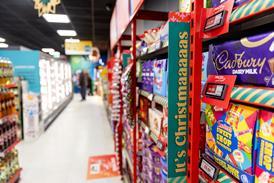







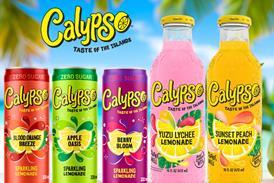



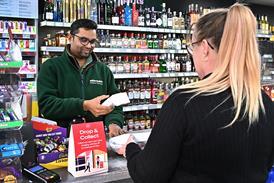







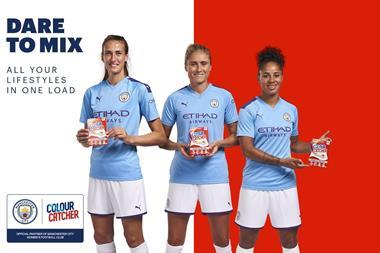





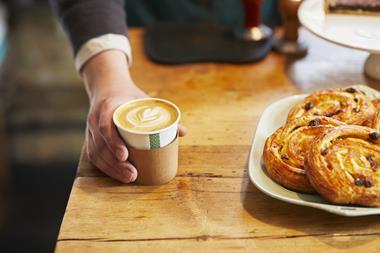




No comments yet